fashion
clothing fashion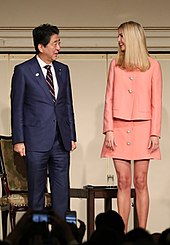
Main article: History of Western fashion
Early Western travelers, traveling whether to India , Persia , Turkey or China, would frequently remark on the absence of change in fashion in those countries. The Japanese shōgun's secretary bragged (not completely accurately) to a Spanish visitor in 1609 that Japanese clothing had not changed in over a thousand years.[4] However, there is considerable evidence in Ming China of rapidly changing fashions in Chinese clothing.[5] Changes in costume often took place at times of economic or social change, as occurred in ancient Rome and the medieval Caliphate, followed by a long period without major changes. In 8th-century Moorish Spain, the musician Ziryab introduced to Córdoba[6][unreliable source][7] sophisticated clothing-styles based on seasonal and daily fashions from his native Baghdad, modified by his own inspiration. Similar changes in fashion occurred in the 11th century in the Middle East following the arrival of the Turks, who introduced clothing styles from Central Asia and the Far East.[8]
The beginning in Europe of continual and increasingly rapid change in clothing styles can be fairly reliably dated. Historians, including James Laver and Fernand Braudel, date the start of Western fashion in clothing to the middle of the 14th century,[9][10] though they tend to rely heavily on contemporary imagery[11] and illuminated manuscripts were not common before the fourteenth century. The most dramatic early change in fashion was a sudden drastic shortening and tightening of the male over-garment from calf-length to barely covering the buttocks,[12] sometimes accompanied with stuffing in the chest to make it look bigger. This created the distinctive Western outline of a tailored top worn over leggings or trousers.
The pace of change accelerated considerably in the following century, and women and men's fashion, especially in the dressing and adorning of the hair, became equally complex. Art historians are therefore able to use fashion with confidence and precision to date images, often to within five years, particularly in the case of images from the 15th century. Initially, changes in fashion led to a fragmentation across the upper classes of Europe of what had previously been a very similar style of dressing and the subsequent development of distinctive national styles. These national styles remained very different until a counter-movement in the 17th to 18th centuries imposed similar styles once again, mostly originating from Ancien Régime France.[13] Though the rich usually led fashion, the increasing affluence of early modern Europe led to the bourgeoisie and even peasants following trends at a distance, but still uncomfortably close for the elites – a factor that Fernand Braudel regards as one of the main motors of changing fashion.[14]
Albrecht Dürer's drawing contrasts a well turned out bourgeoise from Nuremberg (left) with her counterpart from Venice. The Venetian lady's high chopines make her look taller.
In the 16th century, national differences were at their most pronounced. Ten 16th century portraits of German or Italian gentlemen may show ten entirely different hats. Albrecht Dürer illustrated the differences in his actual (or composite) contrast of Nuremberg and Venetian fashions at the close of the 15th century (illustration, right). The "Spanish style" of the late 16th century began the move back to synchronicity among upper-class Europeans, and after a struggle in the mid-17th century, French styles decisively took over leadership, a process completed in the 18th century.[15]
Though textile colors and patterns changed from year to year,[16] the cut of a gentleman's coat and the length of his waistcoat, or the pattern to which a lady's dress was cut, changed more slowly. Men's fashions were largely derived from military models, and changes in a European male silhouette were galvanized in theaters of European war where gentleman officers had opportunities to make notes of foreign styles such as the "Steinkirk" cravat or necktie.
Marie Antoinette, wife of Louis XVI, was a leader of fashion. Her choices, such as this 1783 white muslin dress called a chemise a la Reine, were highly influential and widely worn.[17]
Though there had been distribution of dressed dolls from France since the 16th century and Abraham Bosse had produced engravings of fashion in the 1620s, the pace of change picked up in the 1780s with increased publication of French engravings illustrating the latest Paris styles. By 1800, all Western Europeans were dressing alike (or thought they were); local variation became first a sign of provincial culture and later a badge of the conservative peasant.[18]
Although tailors and dressmakers were no doubt responsible for many innovations, and the textile industry certainly led many trends, the history of fashion design is normally understood to date from 1858 when the English-born Charles Frederick Worth opened the first true haute couture house in Paris. The Haute house was the name established by government for the fashion houses that met the standards of industry. These fashion houses have to adhere to standards such as keeping at least twenty employees engaged in making the clothes, showing two collections per year at fashion shows, and presenting a certain number of patterns to costumers.[19] Since then, the idea of the fashion designer as a celebrity in his or her own right has become increasingly dominant.[20]
The idea of unisex dressing originated in the 1960s when designers such as Pierre Cardin and Rudi Gernreich created garments, such as stretch jersey tunics or leggings, meant to be worn by both males and females. The impact of unisex expands more broadly to encompass various themes in fashion including androgyny, mass-market retail, and conceptual clothing.[21] The fashion trends of the 1970s, such as sheepskin jackets, flight jackets, duffel coats, and unstructured clothing influenced men to attend social gatherings without a tuxedo jacket and to accessorize in new ways. Some men's styles blended the sensuality and expressiveness despite the conservative trend, the growing gay-rights movement and an emphasis on youth allowed for a new freedom to experiment with style, fabrics such as wool crepe, which had previously been associated with women's attire was used by designers when creating male clothing.[22]
The four major current fashion capitals are acknowledged to be Paris, Milan, New York City, and London, which are all headquarters to the greatest fashion companies and are renowned for their major influence on global fashion. Fashion weeks are held in these cities, where designers exhibit their new clothing collections to audiences. A succession of major designers such as Coco Chanel and Yves Saint-Laurent have kept Paris as the center most watched by the rest of the world, although haute couture is now subsidized by the sale of ready-to-wear collections and perfume using the same branding.
Modern Westerners have a wide number of choices available in the selection of their clothes. What a person chooses to wear can reflect his or her personality or interests. When people who have high cultural status start to wear new or different clothes, a fashion trend may start. People who like or respect these people become influenced by their personal style and begin wearing similarly styled clothes. Fashions may vary considerably within a society according to age, social class, generation, occupation, and geography and may also vary over time. If an older person dresses according to the fashion young people use, he or she may look ridiculous in the eyes of both young and older people. The terms fashionista and fashion victim refer to someone who slavishly follows current fashions.
One can regard the system of sporting various fashions as a fashion language incorporating various fashion statements using a grammar of fashion. (Compare some of the work of Roland Barthes.)
In recent years, Asian fashion has become increasingly significant in local and global markets. Countries such as China, Japan, India, and Pakistan have traditionally had large textile industries, which have often been drawn upon by Western designers, but now Asian clothing styles are also gaining influence based on their own ideas.[23]
Fashion industry
Male and female fashion models on the runaway, Los Angeles Fashion Week, 2008
See also: Clothing industry and Fashion show
The notion of global fashion industry is a product of the modern age.Actually this industry is globalised before the age of silk route between India and China [24] Prior to the mid-19th century, most clothing was custom-made. It was handmade for individuals, either as home production or on order from dressmakers and tailors. By the beginning of the 20th century—with the rise of new technologies such as the sewing machine, the rise of global capitalism and the development of the factory system of production, and the proliferation of retail outlets such as department stores—clothing had increasingly come to be mass-produced in standard sizes and sold at fixed prices.
Although the fashion industry developed first in Europe and America, as of 2017, it is an international and highly globalized industry, with clothing often designed in one country, manufactured in another, and sold worldwide. For example, an American fashion company might source fabric in China and have the clothes manufactured in Vietnam, finished in Italy, and shipped to a warehouse in the United States for distribution to retail outlets internationally. The fashion industry has long been one of the largest employers in the United States,[25] and it remains so in the 21st century. However, U.S. employment declined considerably as production increasingly moved overseas, especially to China. Because data on the fashion industry typically are reported for national economies and expressed in terms of the industry's many separate sectors, aggregate figures for world production of textiles and clothing are difficult to obtain. However, by any measure, the clothing industry accounts for a significant share of world economic output.[26] The fashion industry consists of four levels:
the production of raw materials, principally fibers and textiles but also leather and fur.
the production of fashion goods by designers, manufacturers, contractors, and others.
retail sales
various forms of advertising and promotion
These levels consist of many separate but interdependent sectors. These sectors are Textile Design and Production, Fashion Design and Manufacturing, Fashion Retailing, Marketing and Merchandising, Fashion Shows, and Media and Marketing. Each sector is devoted to the goal of satisfying consumer demand for apparel under conditions that enable participants in the industry to operate at a profit.[27]
Fashion trend
Main articles: Fashion trend and 2010s in fashion
Fashion trends are influenced by several factors including cinema, celebrities, climate, creative explorations, political, economical, social and technological. Examining these factors is called a PEST analysis. Fashion forecasters can use this information to help determine growth or decline of a particular trend. Fashion trends change daily, it can not stay unchanged
Political influences
Advisor to US President and businesswoman Ivanka Trump (right) along with Japanese PM Shinzo Abe wearing Western-style business suits, 2017
Political culture plays a critical role in the fashion industry. Political changes are reflection of today's fashions. Most of the political events and laws are affecting fashion in a way of creating fashion trend. Considering the relationship between fashion and politics, we can see how fashion is not only a matter of aesthetic but it involves politics as well. Within political references, we can see how fashion can change.
Not only did political events make a huge impact on fashion trends but also the political figure played a critical role in forecasting the fashion trend. For example, First Lady Jacqueline Kennedy was a fashionable icon of the early 1960s who led formal dressing trend. By wearing a Chanel suit, a structural Givenchy shift dress or a soft color Cassini coat with huge buttons, it created her elegant look and led a delicate trend.
Furthermore, political revolution also made much impact on the fashion trend. For example, during the 1960s the economy had become wealthier, divorce rate was increasing and government approved the birth control pill. This revolution inspired younger generation to rebellion. In 1964, the leg-baring miniskirt has become a major fashion trend of the 1960s. Given that fashion designers began to experiment with the shapes of garment, loose sleeveless, micro-minis, flared skirts, and trumpet sleeves. In this case, mini-skirt trend became an icon of the 1960s.
Moreover, political movement built an impressive relationship with fashion trend. For instance, during Vietnam war, the youth of America made a movement that affected the whole country. In the 1960s, the fashion trend was full of fluorescent colors, prints patterns, bell-bottom jeans, fringed vests, and skirt became a protest outfit of the 1960s. This trend was called Hippie and it is still affecting current fashion trend.[28]
Technology influences
Technology plays a large role in most aspects of today's society. Technological influences are growing more apparent in the fashion industry. Advances and new developments are shaping and creating current and future trends.
Developments such as wearable technology have become an important trend in fashion and will continue with advances such as clothing constructed with solar panels that charge devices and smart fabrics that enhance wearer comfort by changing color or texture based on environmental changes.[29]
The fashion industry is seeing how 3D printing technology has influenced designers such as Iris Van Herpen and Kimberly Ovitz. These designers have been heavily experimenting and developing 3D printed couture pieces. As the technology grows, the 3D printers will become more accessible to designers and eventually consumers, which could potentially shape the fashion industry entirely.
Internet technology such as online retailers and social media platforms have given way for trends to be identified, marketed and sold immediately.[30] Styles and trends are easily conveyed online to attract the trendsetters. Posts on Instagram or Facebook can easily increase awareness about new trends in fashion which can create high demand for specific items or brands,[31] new "buy now button" technology can link these styles with direct sales.
Machine vision technology has been developed to track how fashions spread through society. The industry can now see the direct correlation on how fashion shows influence street-chic outfits. The effects can now be quantified and provide valuable feedback to fashion houses, designers and consumers regarding trends.[32]
Military technology has played an important role in the fashion industry. The camouflage pattern in clothing was developed to help military personal be less visible to enemy forces. A trend emerged in the 1960s and camouflage fabric was introduced to street wear. The camouflage fabric trend disappeared and resurfaced several times since then. Camouflage started to appear in high fashion by the 1990s.[33] Designers such as Valentino, Dior and Dolce & Gabbana combined camouflage into their runway and ready-to-wear collections.
A company called Hyperstealth has said to have created a technology that can make an object or person invisible. "Quantum Stealth" is a light bending technology and can mask thermal and infrared signs. The company has continued developing this technology, but due to safety and legal concerns minimal information has been released to the public.[34] This technology will not be quickly introduced into the commercial market, but the companies other projects such as non-powered color changing camouflage materials may be. Additional projects such as using interactive or intelligent technology sources that will be embedding into textiles will adjust to surroundings such as weather.[35] As these developments proceed, consumers may see a more modern and technical way of wearing camouflage.
Social influences
Celebrities such as Rihanna have popularised the concept of wearing Latex corset and underwear as outerwear
Red carpet fashion: Italian actors Gabriel Garko and Laura Torrisi wearing designer formal wear at Venice Film Festival, 2009
Fashion trend goes beyond the aesthetic values, it emerges as an expressive tool for designers to deliver their message about the society. With the influence of social media, celebrities and bloggers, their voice are easily being heard and have impact on fashion and trend at any time. Fashion and music are inseparable. Prabal Gurung[36] highlighted the importance of music to his shows, saying "each season we want to tell a story for 10 minutes…. the perfect harmony between cloths and music allows this". Music is a representation of fashion that expresses the abstract design concept into relatable harmony for viewers.
Fashion relates to social and cultural context of an environment. According to Matika,[37] "Elements of popular culture become fused when a person's trend is associated with a preference for a genre of music…like music, news or literature, fashion has been fused into everyday lives." Fashion is not only seen as pure aesthetic values; fashion is also a medium for performers to create an overall atmosphere and express their opinions altogether through music video. The latest music video ‘Formation’ by Beyoncé, according to Carlos,[38] "The pop star pays homage to her Creole root.... tracing the roots of the Louisiana cultural nerve center from the post-abolition era to present day, Beyoncé catalogs the evolution of the city's vibrant style and its tumultuous history all at once. Atop a New Orleans police car in a red-and-white Gucci high-collar dress and combat boots, she sits among the ruins of Hurricane Katrina, immediately implanting herself in the biggest national debate on police brutality and race relations in modern day."
Runway show is a reflection of fashion trend and a designer's thought. For designer like Vivienne Westwood, runway show is a platform for her voice on politics and current events. For her AW15 menswear show, according to Water,[39] "where models with severely bruised faces channeled eco-warriors on a mission to save the planet." Another recent example is a staged feminist protest march for Chanel's SS15 show, rioting models chanting words of empowerment with signs like "Feminist but feminine" and "Ladies first." According to Water,[39] "The show tapped into Chanel's long history of championing female independence: founder Coco Chanel was a trailblazer for liberating the female body in the post-WWI era, introducing silhouettes that countered the restrictive corsets then in favour."
Economic influences
Circular economy
As we undergo a global economic downturn, the "Spend now, think later" belief is getting less relevant in our society.[40] Today's consumer tends to be more mindful about consumption, looking for just enough and better, more durable options. People have also become more conscious of the impact their everyday consumption has on the environment and society. They're looking for ways to mediate their material desires with an aim to do more good in the world. A linear economy is slowly shifting to a circular one.
In today's linear economical system, manufacturers extract resources from the earth to make products that will soon be discarded in landfills, on the other hand, under the circular model, the production of goods operates like systems in nature, where the waste and demise of a substance becomes the food and source of growth for something new. Companies such as MUD Jeans, which is based in the Netherlands employs a leasing scheme for jeans. This Dutch company "represents a new consuming philosophy that is about using instead of owning," according to MUD's website. The concept also protects the company from volatile cotton prices. Consumers pay €7.50 a month for a pair of jeans; after a year, they can return the jeans to Mud, trade them for a new pair and start another year-long lease, or keep them. MUD is responsible for any repairs during the lease period.[40] Another ethical fashion company, Patagonia set up the first multi-seller branded store on EBay in order to facilitate secondhand sales; consumers who take the Common Threads pledge can sell in this store and have their gear listed on Patagonia.com's "Used Gear" section.[40]
China's domestic spending
Consumption as a share of gross domestic product in China has fallen for six decades, from 76 percent in 1952 to 28 percent in 2011. China plans to reduce tariffs on a number of consumer goods and expand its 72-hour transit visa plan to more cities in an effort to stimulate domestic consumption.[41]
The announcement of import tax reductions follows changes in June 2015, when the government cut the tariffs on clothing, cosmetics and various other goods by half. Among the changes — easier tax refunds for overseas shoppers and accelerated openings of more duty-free shops in cities covered by the 72-hour visa scheme. The 72-hour visa was introduced in Beijing and Shanghai in January 2013 and has been extended to 18 Chinese cities.[41]
According to reports at the same time, Chinese consumer spending in other countries such as Japan has slowed even though the yen has dropped.[42] There is clearly a trend in the next 5 years that the domestic fashion market will show an increase.
Consumer's needs
A tourist couple wearing casual clothes at Cumberland Island, 2015
Consumers all have different needs and demands that have to be suited. A person's needs change frequently, which is why fashion trends even exist. An important factor to take into consideration when thinking of consumers’ needs is the key demographics of the customer. Gender, age, income, and even profession can help a company better understand the needs of their customers.[43]
For example, a woman who is pregnant could be looking for diapers, baby strollers, and maternity clothes. Her needs would differ greatly from a woman with children that just went off to college or a teen entering high school.
Often consumers need to be told what they want. Fashion companies have to do their research to ensure they know their customers’ needs before developing solutions. Steve Jobs said, "You’ve got to start with the customer experience and work backwards to the technology. You cannot start with the technology and try to figure out where you are going to sell it".[44]
The best way to understand the consumers’ needs and therefore predict fashion trends is through market research. There are two research methods: primary and secondary.[45] Secondary methods are taking other information that has already been collected, for example using a book or an article for research. Primary research is collecting data through surveys, interviews, observation, and/or focus groups.
Benefits of primary research is specific information about a fashion brand's consumer is explored. Surveys are helpful tools; questions can be open-ended or closed-ended. A negative factor surveys and interviews present is that the answers can be biased, due to wording in the survey or on face-to-face interactions. Focus groups, about 8 to 12 people, can be beneficial because several points can be addressed in depth. However, there are drawbacks to this tactic, too. With such a small sample size, it is hard to know if the greater public would react the same way as the focus group.[45] Observation can really help a company gain insight on what a consumer truly wants. There is less of a bias because consumers are just performing their daily tasks, not necessarily realizing they are being observed. For example, observing the public by taking street style photos of people, the consumer did not get dressed in the morning knowing that would have their photo taken necessarily. They just wear what they would normally wear. Through observation patterns can be seen, helping trend forecasters know what their target market needs and wants.
Knowing the needs of the consumers will increase a fashion companies’ sales and profits. Through research and studying the consumers’ lives the needs of the customer can be obtained and help fashion brands know what trends the consumers are ready for.
Media
Fashion breathes on media and medium . The media plays a significant role when it comes to fashion. For instance, an important part of fashion is fashion journalism. Editorial critique, guidelines, and commentary can be found on television and in magazines, newspapers, fashion websites, social networks, and fashion blogs. In recent years, fashion blogging and YouTube videos have become a major outlet for spreading trends and fashion tips, creating an online culture of sharing one's style on a website or Instagram account. Through these media outlets readers and viewers all over the world can learn about fashion, making it very accessible.[46]
(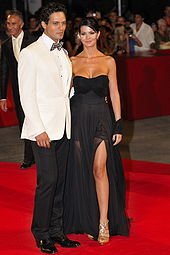 )![sfdsaf.jpg]
)![sfdsaf.jpg]
At the beginning of the 20th century, fashion magazines began to include photographs of various fashion designs and became even more influential than in the past. In cities throughout the world these magazines were greatly sought after and had a profound effect on public taste in clothing. Talented illustrators drew exquisite fashion plates for the publications which covered the most recent developments in fashion and beauty. Perhaps the most famous of these magazines was La Gazette du Bon Ton, which was founded in 1912 by Lucien Vogel and regularly published until 1925 (with the exception of the war years).[citation needed]
( )![sdfasdfsa.jpg]
)![sdfasdfsa.jpg]
A see-through top worn along with pasties by a model at a fashion show in USA, 2017. Such fashion trends get popularised through media.
Vogue, founded in the United States in 1892, has been the longest-lasting and most successful of the hundreds of fashion magazines that have come and gone. Increasing affluence after World War II and, most importantly, the advent of cheap color printing in the 1960s, led to a huge boost in its sales and heavy coverage of fashion in mainstream women's magazines, followed by men's magazines in the 1990s. One such example of Vogue's popularity is the younger version, Teen Vogue, which covers clothing and trends that are targeted more toward the "fashionista on a budget". Haute couture designers followed the trend by starting ready-to-wear and perfume lines which are heavily advertised in the magazines and now dwarf their original couture businesses. A recent development within fashion print media is the rise of text-based and critical magazines which aim to prove that fashion is not superficial, by creating a dialogue between fashion academia and the industry. Examples of this trend are: Fashion Theory (1997) and Vestoj (2009). Television coverage began in the 1950s with small fashion features. In the 1960s and 1970s, fashion segments on various entertainment shows became more frequent, and by the 1980s, dedicated fashion shows such as Fashion Television started to appear. FashionTV was the pioneer in this undertaking and has since grown to become the leader in both Fashion Television and new media channels.
A few days after the 2010 Fall Fashion Week in New York City came to a close, The New Islander's Fashion Editor, Genevieve Tax, criticized the fashion industry for running on a seasonal schedule of its own, largely at the expense of real-world consumers. "Because designers release their fall collections in the spring and their spring collections in the fall, fashion magazines such as Vogue always and only look forward to the upcoming season, promoting parkas come September while issuing reviews on shorts in January", she writes. "Savvy shoppers, consequently, have been conditioned to be extremely, perhaps impractically, farsighted with their buying."[47]
The fashion industry has been the subject of numerous films and television shows, including the reality show Project Runway and the drama series Ugly Betty. Specific fashion brands have been featured in film, not only as product placement opportunities, but as bespoke items that have subsequently led to trends in fashion.[48]
(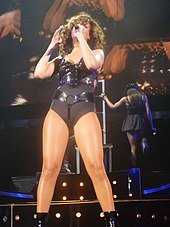 )
)
Videos in general have been very useful in promoting the fashion industry. This is evident not only from television shows directly spotlighting the fashion industry, but also movies, events and music videos which showcase fashion statements as well as promote specific brands through product placements.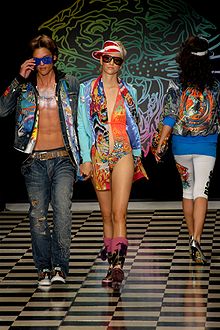
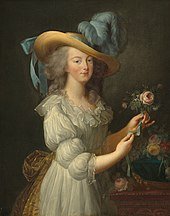 ![safasf.jpg]
![safasf.jpg]